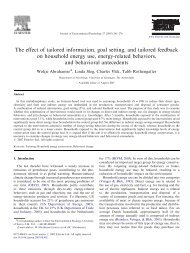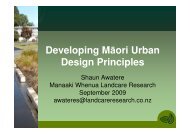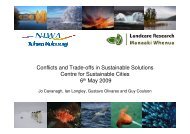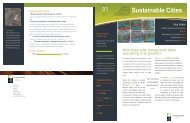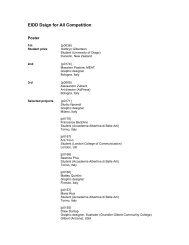Stephen Pattinson: Executive summary of thesis - New Zealand ...
Stephen Pattinson: Executive summary of thesis - New Zealand ...
Stephen Pattinson: Executive summary of thesis - New Zealand ...
Create successful ePaper yourself
Turn your PDF publications into a flip-book with our unique Google optimized e-Paper software.
11<br />
2. Clustered housing – Martin and March (20, 21, 45) theorised that mediumrise<br />
perimeter blocks, with central open space, make the most efficient use <strong>of</strong><br />
urban land. Projects utilising this form <strong>of</strong> development seem to confirm this<br />
hypo<strong>thesis</strong> (Sc<strong>of</strong>fham and Vale 67-69). Cooper Marcus and Sarkissian (7-9, 189)<br />
advocate clustered housing (low-rise perimeter blocks limited to four storeys) as<br />
ideal for medium density housing because <strong>of</strong> the benefits to residents <strong>of</strong> the<br />
central communal space. Clusters can be arranged in varieties <strong>of</strong> ways, e.g.<br />
around curved bay forms or rectangular courtyards, to facilitate and express a<br />
sense <strong>of</strong> community;<br />
3. Green open space – The central open spaces created by the clustering <strong>of</strong><br />
houses provide a natural focus for a potentially wide variety <strong>of</strong> uses, including<br />
courtyards, pocket parks and accessible greens (Alexander et al. 304).<br />
Kazmierczak and James (354) identify many benefits <strong>of</strong> shared green spaces,<br />
including recreation, physical health and mental well-being, aesthetic<br />
enjoyment, sharing in voluntary work, and social interaction;<br />
4. The needs <strong>of</strong> children in the city – a wide body <strong>of</strong> literature addresses the<br />
needs <strong>of</strong> children in city environments. As noted by Cooper Marcus and<br />
Sarkissian, communal spaces within housing clusters can be particularly<br />
beneficial to children. These authors, following the approach <strong>of</strong> Alexander et al.<br />
(1977), provide many design patterns and guidelines for meeting the needs <strong>of</strong> all<br />
age groups <strong>of</strong> children in medium density environments;<br />
5. Sense <strong>of</strong> community – Joongsub Kim (2001) has shown that the design <strong>of</strong> the<br />
physical features <strong>of</strong> a neighbourhood can facilitate a sense <strong>of</strong> local community.<br />
Kim identifies four necessary factors for fostering ‘sense <strong>of</strong> community’ -<br />
neighbourhood identity, neighbourhood attachment, pedestrianism and social<br />
© March 2011 <strong>Stephen</strong> <strong>Pattinson</strong> sjpattinson@paradise.net.nz




